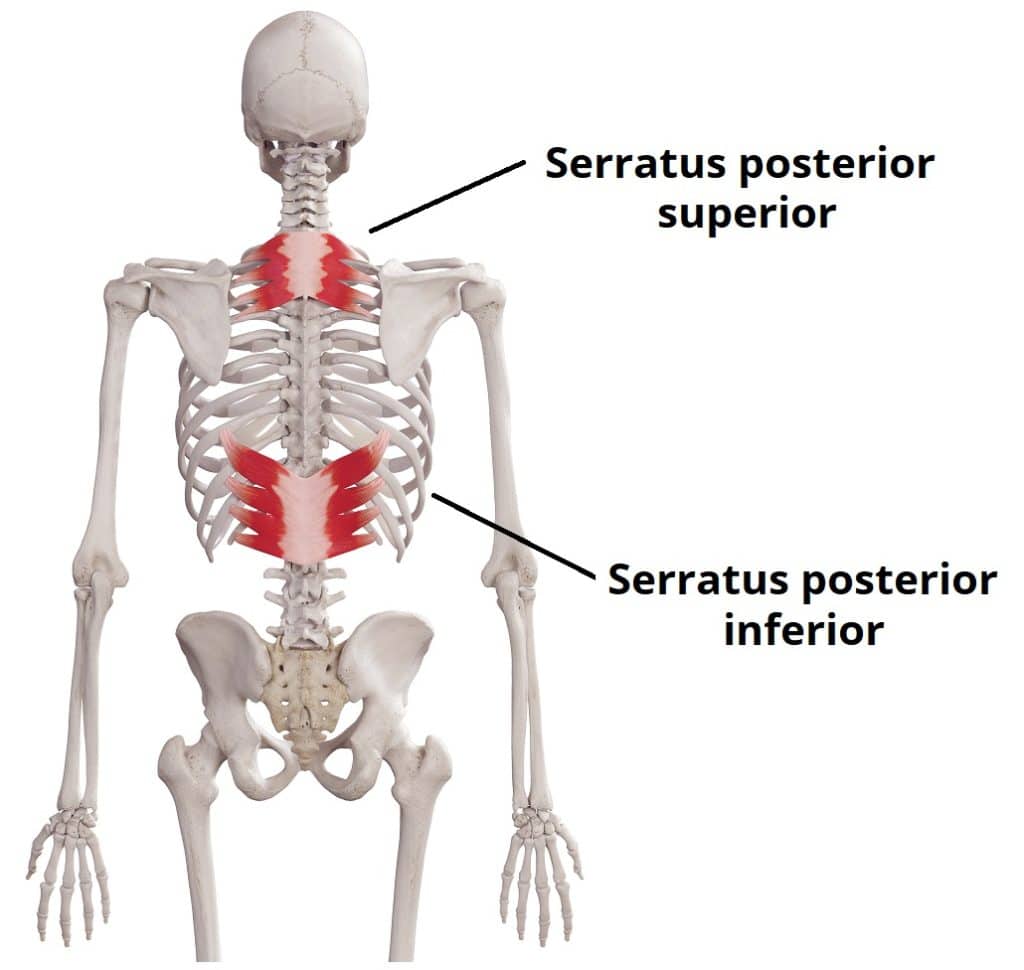The muscles of the back can be divided into three groups – superficial, intermediate and intrinsic:
- Superficial – associated with movements of the shoulder.
- Intermediate – associated with movements of the thoracic cage.
- Deep – associated with movements of the vertebral column.
The deep muscles develop embryologically in the back, and are thus described as intrinsic muscles. The superficial and intermediate muscles do not develop in the back, and are classified as extrinsic muscles.
This article is about the anatomy of the intermediate back muscles – their attachments, innervations and functions.
Premium Feature
3D Model
Intermediate Group
The intermediate group contains two muscles – the serratus posterior superior and serratus posterior inferior. These muscles run from the vertebral column to the ribcage, and assist with elevating and depressing the ribs. They are thought to have a slight respiratory function.
Serratus Posterior Superior
The serratus posterior superior is a thin, rectangular shaped muscle. It lies deep to the rhomboid muscles on the upper back.
- Attachments: Originates from the lower part of the ligamentum nuchae, and the cervical and thoracic spines (usually C7 – T3). The fibres pass in an inferolateral direction, attaching to ribs 2-5.
- Actions: Elevates ribs 2-5.
- Innervation: Intercostal nerves.
Serratus Posterior Inferior
The serratus posterior inferior is broad and strong. It lies underneath the latissimus dorsi.
- Attachments: Originates from the thoracic and lumbar spines (usually T11 – L3). The fibres pass in a superolateral direction, attaching to ribs 9-12.
- Actions: Depresses ribs 9-12.
- Innervation: Intercostal nerves.
